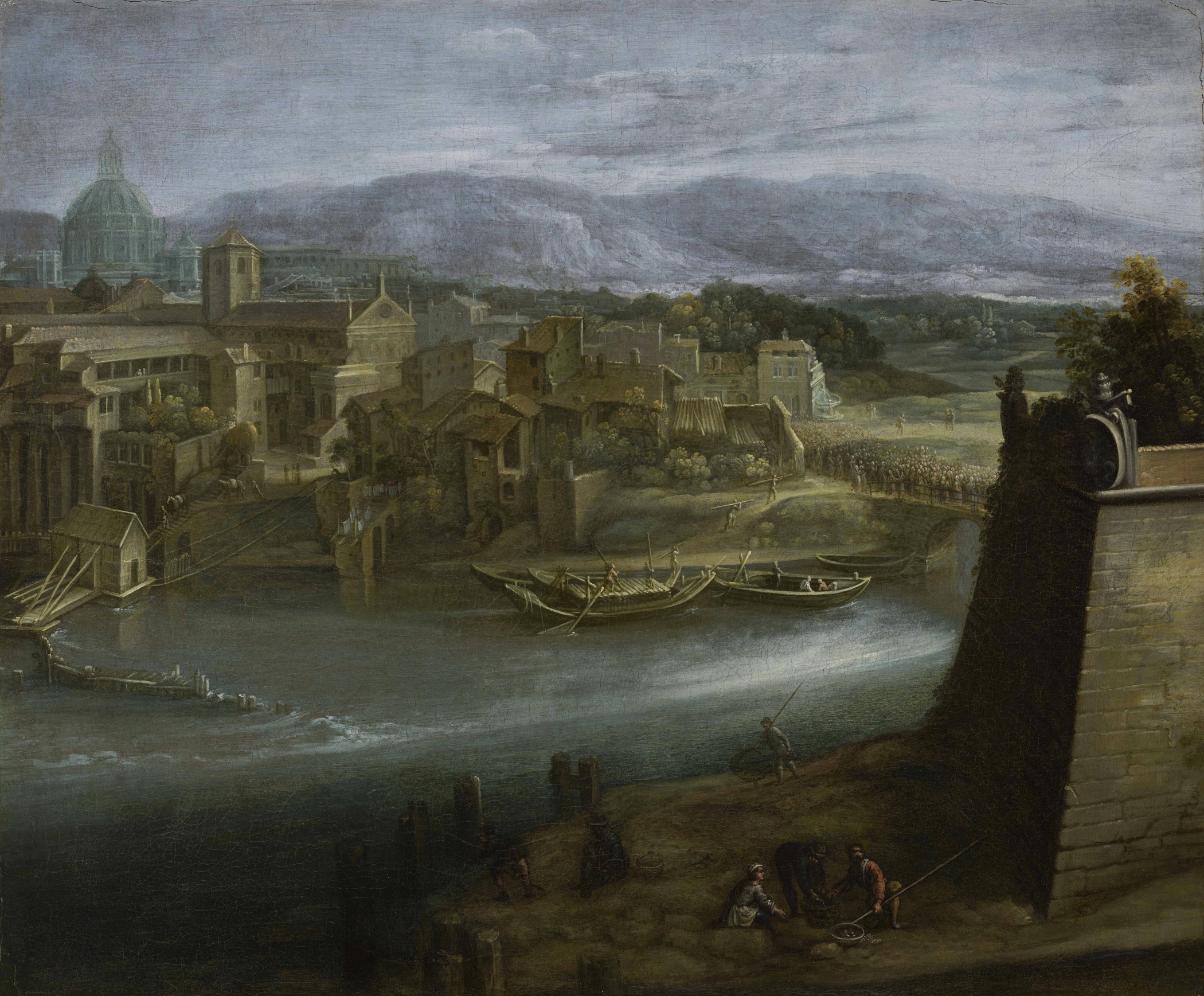Paul and Matthijs Brill
(Antwerp 1554 - Rome 1626 and Antwerp 1550 - 1583 Rome)
Rome, View of Rione di Borgo, c. 1585
Oil on canvas, 65 x 78 cm (25.59 x 30.71 inches)
Paul and Matthijs Brill
(Antwerp 1554 - Rome 1626 and Antwerp 1550 - 1583 Rome)
Rome, View of Rione di Borgo, c. 1585
Oil on canvas, 65 x 78 cm (25.59 x 30.71 inches)
Re: 789
Provenance: Rome, Odescalchi
We are grateful to dr. Mario Epifani for his help in studying this painting by Brill
Exhibited:
Aeterna. Il sogno di Roma nell'arte fiamminga tra '500 e '600. M. Caretto e F. Occhinegro, Roma, 2023, n. 8
This evocative view of the Borgo district, the beating heart of Rome, offers us a glimpse of the city towards the end of the sixteenth century. Is this a topographical view? Or rather a partially imaginary view of Rome? Paul and Matthias Bril are the perfect example of two Flemish born artists who lived and worked almost exclusively in the Lazio region for much of their careers. So much so that they became the local points of reference for many friends and colleagues who, as we have seen, went to Rome to complete their education. In their art, typically Nordic elements were radically changed by the Italian environment, resulting in an extremely unique combination. Observing the canvas, a light full of chiaroscuro tones outlines the skyline of a city almost shrouded in fog, while hills that look more like mountains stand out on the horizon. Everything in the city, nature and houses, is outlined with green brushstrokes in countless variations. The Dome of St. Peter can clearly be seen on the left. A careful observation reveals, however, that the author made a change while working on the painting. He corrected it to make it more lifelike, as initially its shape resembled that of the Pantheon. Behind the monumental churches, on the banks of the Tiber, one can see the people’s houses with their hanging rags, while a large procession is walking on the bridge towards the end of the city and the surrounding countryside.
The study carried out on the work made it possible to place it during the papacy of Gregory XIII Boncom- pagni (1572-1585). This is inferred from the papal coat of arms placed on the top of the rampart on the far right of the painting. It was an era of change for the city, not all of which could be told at once and perhaps for this reason summarized with fantastic effort in the canvas, rather than accurately documented. This view – hovering between imaginary and real – with its raised perspective, seems to want to collect as many elements as possible without focusing precisely on any of them. The solid buildings are accompanied by a vaguely dreamlike atmosphere, thus becoming almost an ideal ending of the path we have outlined, an epilogue that, we wish, could become the start of a passion. The dream of a city like no other in the world, able to change the soul of countless artists and not only that, but truly an eternal and timeless enchantment.

